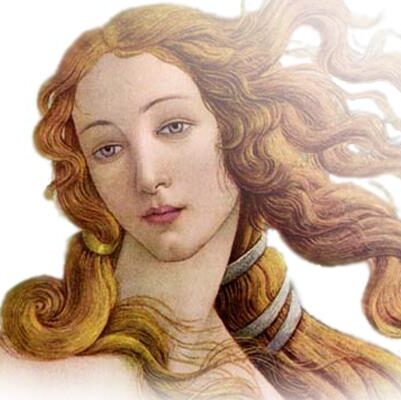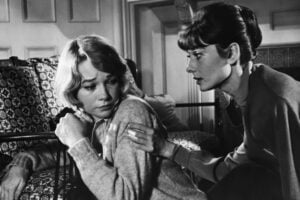by Sherif M. Awad
Introduction
The 1960s marked a period of shifting societal attitudes and changes in film representation. While LGBTQ+ representation remained limited due to censorship and social norms, there were a few notable films from this era that touched upon lesbian characters or explored same-sex relationships. These films reflected the evolving cultural landscape and contributed to the progression of LGBTQ+ representation in cinema.
Lesbian Films of the 1960s: Navigating Representation in a Decade of Change and Censorship
We will delve into the intriguing world of films from the 1960s that dared to explore lesbian characters and themes. The 1960s was a decade marked by social and cultural transformation, as traditional values clashed with the winds of change. It was a time of increasing visibility for marginalized groups, including the LGBTQ+ community, yet it was also an era of censorship and conservative backlash.
In this article, we embark on a cinematic journey, examining a selection of films from the 1960s that challenged societal norms and shed light on lesbian experiences. These films, released against a backdrop of shifting attitudes and restrictive censorship, pushed boundaries and contributed to the gradual evolution of LGBTQ+ representation in cinema.
Throughout this exploration, we will analyze the following films, each offering a unique perspective on lesbian and bisexual women across a range of genres:
- “The Children’s Hour” (1961)
- “Victim” (1961)
- “Mädchen in Uniform” (1961)
- “The Chaser” (1962)
- “Advise and Consent” (1962)
- “The L-Shaped Room” (1962)
- “The Haunting” (1963)
- “The Pumpkin Eater” (1964)
- “The Leather Boys” (1964)
- “The Third Day” (1965)
- “La Religieuse” (1966)
- “Persona” (1966)
- “Blow-Up” (1966)
- “Reflections in a Golden Eye” (1967)
- “The Fox” (1967)
- “The Ballad of Josie” (1967)
- “The Killing of Sister George” (1968)
- “Les Biches” (1968)
- “Therese and Isabelle” (1968)
- “La Prisonnière” (1968)
1960s Films Featuring Lesbian Characters
“The Children’s Hour” (1961)
It is a compelling drama film that delves into the repercussions of a false accusation of a lesbian affair. Based on the play of the same name by Lillian Hellman, the story revolves around two female teachers, Karen Wright and Martha Dobie, who run a girls’ boarding school. A deceitful student, Mary Tilford, spreads a rumor that Karen and Martha are engaged in a romantic relationship.
The film meticulously explores the consequences of this false rumor on the lives and careers of Karen and Martha. It delves into the complexities of their relationship, the strain it places on their friendship, and the devastating impact it has on their professional reputation. As they face the harsh judgment of their community, the film raises questions about the destructive power of gossip and the destructive effects of societal prejudice.
During its initial release, “The Children’s Hour” received a mixed response from both audiences and critics. The film’s portrayal of lesbian characters and themes was considered groundbreaking for its time. However, due to the conservative social climate of the era, it also faced backlash and censorship challenges. The film had to navigate the Production Code, which imposed strict guidelines on the depiction of homosexuality. Consequently, the lesbian relationship is only implied and never explicitly stated in the film.
Despite the limitations imposed by censorship, “The Children’s Hour” was praised for its sensitive handling of the subject matter and the powerful performances by Audrey Hepburn as Karen Wright and Shirley MacLaine as Martha Dobie. It was particularly acclaimed for its exploration of the emotional turmoil faced by the characters and the devastating consequences of false accusations.
Critics recognized the film’s significance in addressing lesbian themes and shedding light on the impact of societal prejudice. However, some reviewers expressed disappointment over the film’s lack of explicit representation. Nonetheless, “The Children’s Hour” served as an important stepping stone in the portrayal of lesbian characters in mainstream cinema, setting the stage for future films that would continue to push the boundaries of LGBTQ+ representation.
Despite the mixed reception, “The Children’s Hour” remains an important film that explores the complexities of lesbian relationships and the consequences of societal prejudice. Its impact on LGBTQ+ representation in cinema cannot be understated, and it paved the way for greater visibility and acceptance in the years to come.
Frequently Asked Questions
Over the following decades, the status of “The Children’s Hour” experienced notable shifts as societal attitudes and norms evolved. While the film initially faced censorship challenges and a mixed reception, its significance and impact on LGBTQ+ representation gained greater recognition over time. Here’s a look at how its status changed through the decades:
1970s:
During the 1970s, a decade marked by social and cultural upheaval, “The Children’s Hour” began to be reevaluated in the context of a more liberal and progressive era. The growing visibility of the LGBTQ+ rights movement and the women’s liberation movement contributed to a reassessment of the film’s themes and its portrayal of lesbian characters. It started to be viewed as a courageous and groundbreaking work that shed light on the experiences of marginalized individuals.
1980s:
In the 1980s, as LGBTQ+ activism gained momentum and discussions around representation intensified, “The Children’s Hour” was increasingly recognized as a pivotal film in the history of queer cinema. It became a touchstone for exploring the challenges faced by lesbian characters and the impact of societal prejudice. The film’s nuanced approach to the subject matter and its exploration of emotional turmoil resonated with audiences who were seeking authentic portrayals of diverse sexual orientations.
1990s:
During the 1990s, a decade marked by increased visibility and acceptance of LGBTQ+ individuals, “The Children’s Hour” continued to be celebrated as a landmark film. It was acknowledged as a significant contribution to the canon of queer cinema and an important step forward in challenging traditional norms. The film’s impact on subsequent generations of filmmakers and its role in inspiring more explicit and authentic portrayals of lesbian relationships were recognized and celebrated.
2000s and Beyond:
In the 2000s and beyond, “The Children’s Hour” holds its place as a classic film that paved the way for LGBTQ+ representation. It is studied in academic circles and remains a subject of analysis and discussion in queer film studies. The film’s historical significance and its impact on shaping the trajectory of lesbian representation in cinema continue to be recognized and appreciated by audiences and critics alike.
Throughout the years, “The Children’s Hour” has experienced a shift in status from a film that faced initial censorship challenges and mixed reception to a respected and influential work of queer cinema. Its exploration of lesbian characters and themes has contributed to the ongoing progress in LGBTQ+ representation and has inspired future filmmakers to tell authentic and diverse stories.
As we continue our exploration of films from the 1960s, we will uncover other works that further expanded and shaped the representation of lesbian characters on the silver screen.
Q: Were there any restrictions on depicting lesbian characters in films during the 1960s?
A: Yes, there were significant restrictions and societal pressures that limited the explicit portrayal of lesbian characters. Films often had to navigate censorship boards and societal prejudices, resulting in more subtle or implied representations of same-sex relationships.
Q: How did these films contribute to LGBTQ+ representation in the 1960s?
A
: Despite the challenges, these films laid the groundwork for future LGBTQ+ representation. They sparked conversations, challenged stereotypes, and paved the way for more open discussions about same-sex relationships in the following decades.
Q: How did societal attitudes towards lesbianism change during the 1960s?
A: The 1960s witnessed the beginning of a gradual shift in societal attitudes towards homosexuality, including lesbianism. The growing visibility of LGBTQ+ individuals and the Civil Rights and Women’s Liberation movements contributed to changing perspectives and increased dialogue about sexual orientation.

